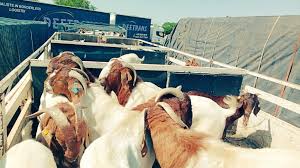Kutsaga calls for weed management to boost tobacco production
TOBACCO Research Board, trading as Kutsaga Research Station, has called on farmers to effectively manage weeds when growing the plant as it is crucial during the vegetative and expansion stages of the golden leaf.
In a research paper on tobacco weed management titled Nutsedge Weeds Management: Key Strategies for Tobacco Farmers, Kutsaga said the two species of nutsedge, Cyperus esculentus L. (yellow Nutsedge) and Cyperus rotundas (purple nutsedge) were particularly problematic.
According to Kutsaga, Nutsedge weeds are highly adaptable, thriving in diverse environmental conditions and possess multiple modes of reproduction, including rhizomes, true seeds and tubers.
“Effective weed management is crucial during the vegetative and expansion stages of a tobacco crop, as competition for nutrients, can lead to significant yield reductions,” Kutsaga said.
“Two species of nutsedge, Cyperus esculentus L. (yellow nutsedge) and Cyperus rotundas (purple nutsedge), are particularly problematic in both irrigated or rainfed tobacco cropping systems. These weeds thrive in various environments and can severely impact crop productivity if not managed properly.”
Kutsaga said the reproductive versatility of Nutsedge weeds made nutsedge control extremely challenging.
“One nutsedge tuber can produce between 1 900 and 2 000 plants and generate approximately 6 000 to 6 900 tubers in a single growing season. These tubers can persist in the soil for extended periods, remaining dormant and contributing to the weed’s notorious persistence over several seasons,” Kutsaga said.
“When nutsedge plants experience mechanical or environmental stress, they redirect resources towards their storage organs (tubers), enabling them to survive adverse conditions. This response underscores the importance of timely and effective management, as improper control can exacerbate the problem by encouraging the proliferation of these storage structures.”
Kutsaga added that both mechanical and chemical control measures needed to be employed to suppress the spread of nutsedge and mitigate its impact on tobacco production.
Mechanical methods of nutsedge control are often used as an initial measure to reduce weed populations.
These methods include ploughing, disking, mowing, hand-hoeing and cultivation.
“Herbicide use is essential for controlling nutsedge weeds, especially due to their ability to target the weeds reproductive organs and offer long-term control solutions. The effectiveness of chemical herbicides depends on proper application timing, herbicide type, and coverage,” Kutsaga said.
“Pre-emergence herbicides are applied to prevent weed seed germination and should be used before the weeds emerge. In tobacco production, these herbicides are typically applied within four days of transplanting the crop. Adequate soil moisture, often achieved through ‘settling-in’ irrigation, is necessary to activate the herbicides.”
Kutsaga said that this moisture helped form a herbicide seal at a depth of 1cm-5cm from the soil surface, inhibiting weed seed germination.
“Post-emergence herbicides are applied after the weeds have emerged, ideally when the weeds are still in the seedling stage (2-3 leaves). Maximum herbicide coverage is essential for effective results,” Kutsaga said.-newsda4










